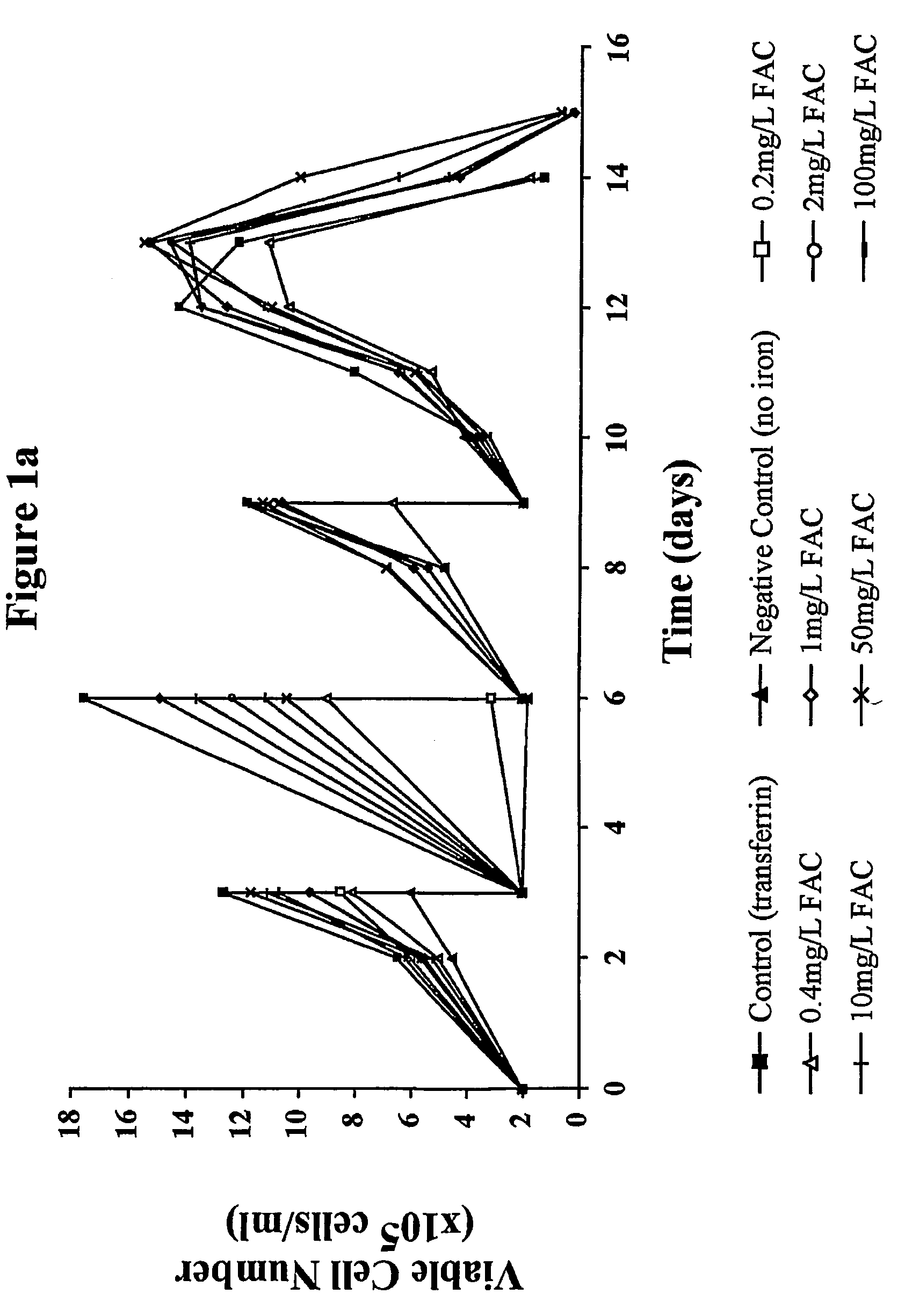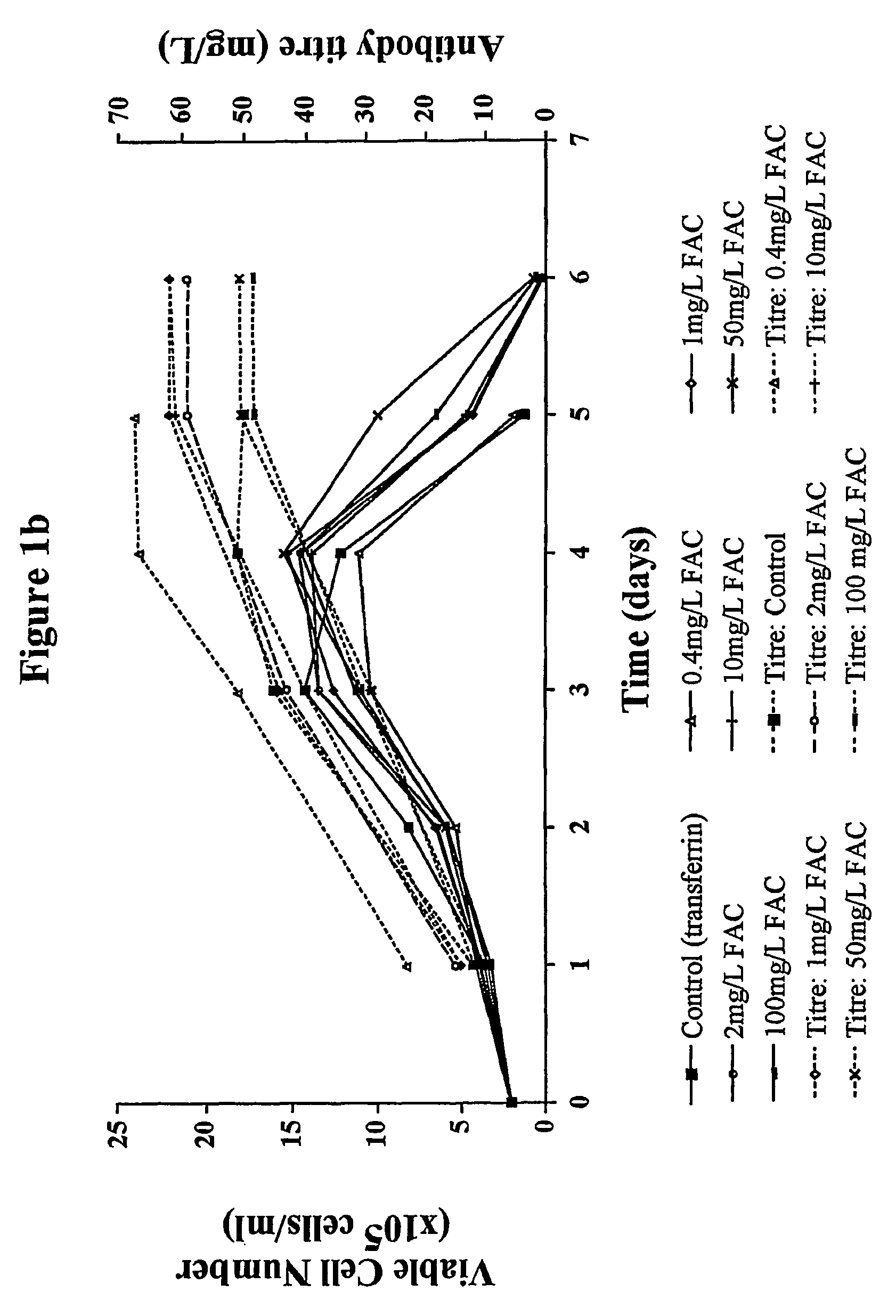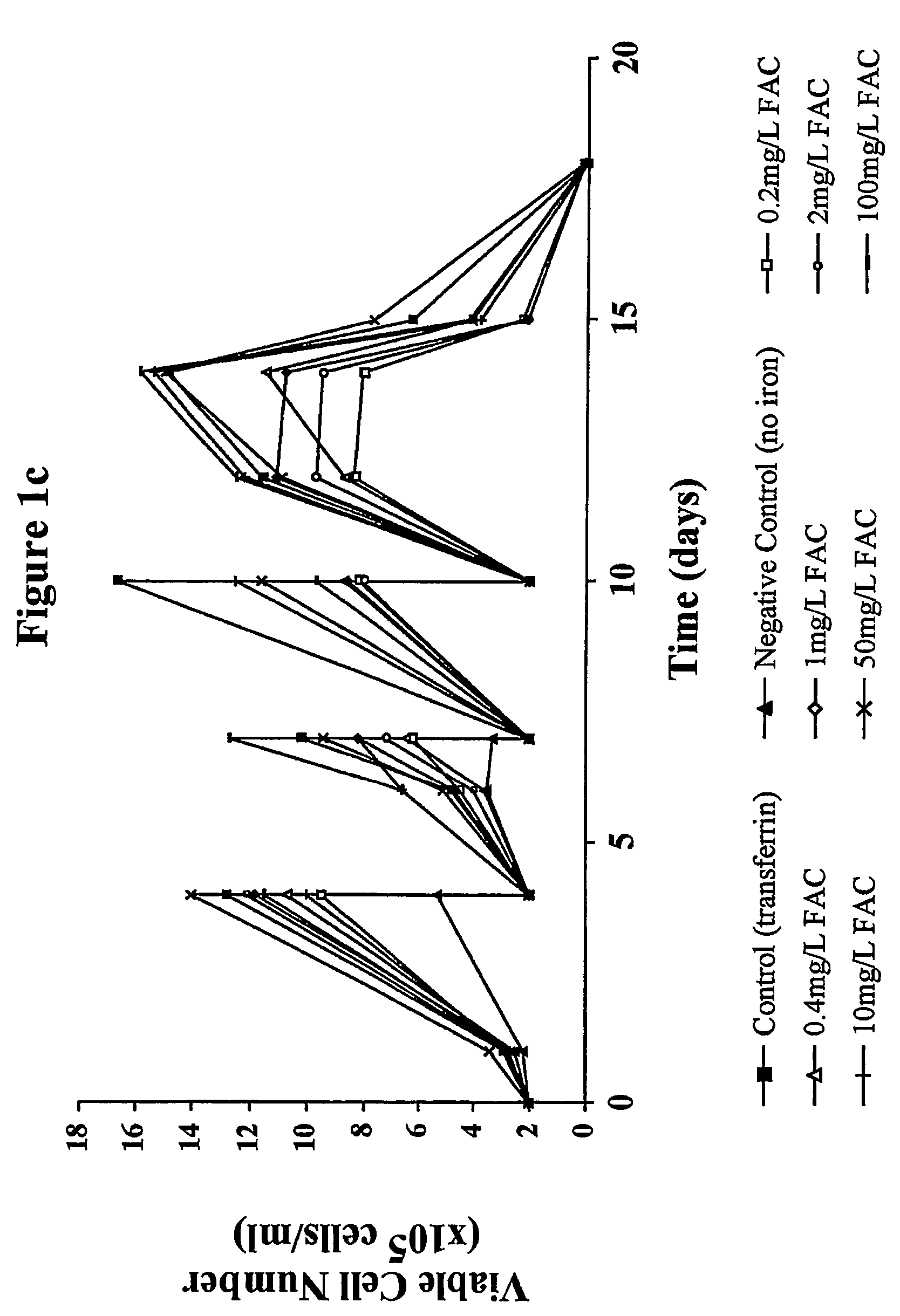Myeloma cell culture in transferrin-free low iron medium
a technology of transferrin-free, low iron medium and myeloma cell, which is applied in the direction of genetically modified cells, tumor/cancer cells, skeletal/connective tissue cells, etc., can solve the problems of high oxidative potential, inability to effectively supply iron to mammalian cells, and oxidation of cell culture medium components, etc., to improve the titre of myeloma cell product, increase production costs, and prolong tim
- Summary
- Abstract
- Description
- Claims
- Application Information
AI Technical Summary
Benefits of technology
Problems solved by technology
Method used
Image
Examples
example 1
Ferric Ammonium Citrate (FAC) at 0.2 mg / L is Able to Support Continuous Growth of GS-NS0 Cell Lines
Methods
[0095]A recombinant GS-NS0 mouse myeloma cell line (Cell line A) expressing a human IgG antibody using the glutamine synthetase (GS) expression system (European Patent Specification No. 2560550) previously subcultured in a proprietary serum free medium (GSF medium) containing a chelated source of iron was centrifuged and resuspended in chelator-free medium. Cells resuspended in this medium were then used to inoculate experimental flasks at an inoculation density of 2×105 cells / ml.
[0096]The experiment was carried out using 250 ml Erlenmeyer flasks (working volume between 20 and 50 ml) with vented caps incubated in a reciprocal shaker at 36.5° C. and 125 rpm with an atmosphere of 5% CO2 / 95% air and 75% humidity.
[0097]Individual flasks containing modified CDSS medium were supplemented using stock solutions of FAC to give flasks containing FAC at final concentrations of 0.2, 0.4, 1,...
example 2
Ferric Citrate (FC) is Required at a Concentration One Order of Magnitude Higher than FAC in Order to Support Continuous Growth of GS-NS0 Cell Lines
Methods
[0104]The methodology of example 2 was identical to that of example 1, the only exception being the source of chelated iron. In this example, ferric citrate (FC) was used in place of FAC.
[0105]FC is only slowly soluble in cold water. To prepare stock solutions of FC it was therefore necessary to dissolve FC in water maintained at 80° C., with agitation, for up to 2 hours. Stock solutions were prepared at concentrations of 0.5 (for flasks containing 0.2 to 2 mg / L FAC) and 10 mg / L (for flasks containing 10 to 100 mg / L FAC).
Results
[0106]FIG. 2a shows the cell concentration during the subculturing and final overgrow for the range of FC concentrations tested. This shows that the negative control culture and the culture containing 0.2 mg / L FC were unable to proliferate beyond the first subculture. The cultures containing 0.4, 1 and 2 mg...
example 3
Hybridoma Cell Lines Require FAC at a Concentration in Excess of Two Orders of Magnitude Higher than GS-NS0 Cell Lines to Obtain Continuous Cell Growth in Agitated Suspension Culture
Methods
[0110]The methodology of example 3 was identical to that of example 1, with the following exceptions:
[0111]A mouse hybridoma cell line (9E10), producing anti-Myc antibody, previously subcultured in modified CDSS supplemented with 1 mg / L human transferrin and 6 mM Glutamine was used to inoculate experimental flasks at an inoculation density of 1×105 cells / ml.
[0112]The experiment was carried out using 250 ml Erlenmeyer flasks with sealed caps incubated in a reciprocal shaker at 36.5° C. and 125 rpm. Flasks were gassed initially and at 2 day intervals with 5% CO2 / 95% Air.
[0113]Flasks were not supplemented with cholesterol lipid concentrate since this hybridoma cell line does do not require cholesterol,
[0114]Flasks were subcultured by dilution with fresh medium back to 1×105 cells / ml at 3 day interval...
PUM
| Property | Measurement | Unit |
|---|---|---|
| concentrations | aaaaa | aaaaa |
| concentration | aaaaa | aaaaa |
| concentration | aaaaa | aaaaa |
Abstract
Description
Claims
Application Information
 Login to View More
Login to View More - R&D
- Intellectual Property
- Life Sciences
- Materials
- Tech Scout
- Unparalleled Data Quality
- Higher Quality Content
- 60% Fewer Hallucinations
Browse by: Latest US Patents, China's latest patents, Technical Efficacy Thesaurus, Application Domain, Technology Topic, Popular Technical Reports.
© 2025 PatSnap. All rights reserved.Legal|Privacy policy|Modern Slavery Act Transparency Statement|Sitemap|About US| Contact US: help@patsnap.com



